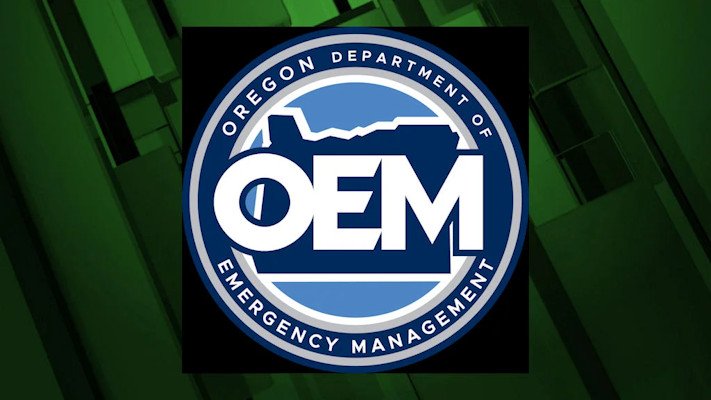Wednesday’s nationwide emergency alert is first of October events to focus awareness on Oregon quake preparedness

SALEM, Ore. (KTVZ) — Oregon is home to several fault lines that cause dozens of earthquakes every year. The most known earthquake threat is the Cascadia Subduction Zone, a 700-mile fault located off the Pacific coast that puts Oregon at risk for a 9.0+ magnitude earthquake.
A quake of that size could cause five to seven minutes of shaking, followed by a tsunami that would devastate coastal areas. October features several events reminding Oregonians to prepare and protect themselves before the ground starts shaking.
Wireless Emergency Alerts
“One of the most important steps people can take is to enable Wireless Emergency Alerts, or WEA, on their cell phones,” said Oregon Department of Emergency Management (OEM) Director Erin McMahon. “WEA are short emergency messages sent to your phone to warn of an impending natural or human-made disaster, like an earthquake. WEA messages can provide immediate, life-saving information.”
The Federal Emergency Management Agency (FEMA) is conducting a nationwide WEA test on all consumer cell phones at 11:20 a.m. on Wednesday, Oct. 4. People will see a message on their phones that reads “THIS IS A TEST of the National Wireless Emergency Alert System. No action is needed.” Phones with the main menu set to Spanish will display: “ESTA ES UNA PRUEBA del Sistema Nacional de Alerta de Emergencia. No se necesita acción.”
At the same time, FEMA will also test the Emergency Alert System (EAS) that broadcasts on radios and televisions. The message will read, “This is a nationwide test of the Emergency Alert System, issued by the Federal Emergency Management Agency. This is only a test. No action is required by the public.”
ShakeAlert Earthquake Early Warning Notifications
People in Oregon, Washington and California who’ve opted into WEA automatically receive ShakeAlert earthquake early warning notifications for earthquakes in their area with a magnitude of 4.5 or greater, which can offer critical seconds of warning to seek cover from falling objects and brace themselves. ShakeAlert uses science and technology to detect significant earthquakes quickly and sends an alert to people on their cell phones. The alert makes a distinctive sound and displays a text message reading, “Earthquake detected! Drop, cover, hold on. Protect yourself.” This message is also available in Spanish for phones set to receive alerts in that language. Some cell phones with text-to-voice capability may read out the message text.
Great Oregon ShakeOut
An effective and no-cost way for individuals and families to practice earthquake safety is to register for The Great Oregon ShakeOut, a self-led earthquake drill taking place at 10:19 a.m. on Oct. 19. Nearly half a million Oregonians have already registered, pledging to Drop, Cover and Hold On for at least 60 seconds as if a major earthquake was occurring at that moment.
“Knowing what to do when the earth starts shaking helps people reduce their risk and better protect themselves to prepare for earthquakes,” said Director McMahon. “Most emergency management experts and official preparedness organizations agree that Drop, Cover and Hold On is the appropriate action to reduce the chance of injury from falling objects and flying debris during earthquakes. When people practice these simple steps, it becomes a routine that allows instincts to kick in when shaking starts.”
When the ground starts to shake, or you receive an earthquake alert on a cell phone:
- Drop immediately onto hands and knees. This position protects you from being knocked down and allows you to stay low and crawl to a nearby shelter. If you use a wheelchair or walker, lock your wheels.
- Cover your head and neck with one arm and hand. If a sturdy table or desk is nearby, crawl underneath it for shelter. If there is no nearby shelter, crawl next to an interior wall away from windows. Remain on your knees and bend over to protect vital organs.
- Hold On until the shaking stops. If under a shelter, hold onto it with one hand and be ready to move with the shelter if it shifts. If there is no shelter, hold onto your head and neck with both arms and hands.
If you're near the ocean and feel a large earthquake, Drop, Cover and Hold On until the shaking stops. Then walk inland and up to high ground. Do not wait for an official warning, as a tsunami could come ashore in a few minutes. Learn more about earthquake preparedness on OEM’s website.
ORAlert and Be 2 Weeks Ready
OEM also encourages people in Oregon to sign up for local emergency alerts from their county or tribe at ORAlert.gov; be informed and knowledgeable about the hazards where they live; and have an emergency plan and enough food, water and supplies to survive for at least two weeks following any disaster. The agency’s Be 2 Weeks Ready program offers several resources in multiple languages to help people prepare.
Learn more at oregon.gov/oem.